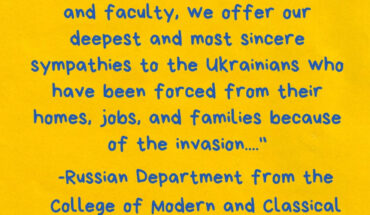The Office of Facilities has yet to publicly release the construction start date for the proposed $73 million building intended to house the College of Health and Human Services.
According to a June 2014 press release from the university, Mason secured $65 million in state funding and was still looking to raise $8 million in donations. Facilities intended to begin construction this month with an end date of January 2017.
Facilities failed to return multiple phone calls from Fourth Estate requesting an update on the building’s construction.
Presently, CHHS students have to travel between buildings and campuses to fulfill degree responsibilities. Some facilities are not located on campus at all, such as the nutrition lab, which is housed in downtown Fairfax.
“Ever since the inception of the nursing program, which was our founding program 40 years ago, because we’re celebrating our 40th anniversary this year, our college has never been under one roof,” Director of Advancement at CHHS Dayna Kuhar said.
The building, currently dubbed Academic VII, will be located in what is now Lot H next to Whitetop and Rogers. According to Dean Thomas Prohaska, this consolidated location for CHHS will give students opportunities to collaborate across disciplines.
“The vision includes not only having the opportunity of melding population and clinical health but also training people to be multidisciplinary researchers and educators, which is a blending of more than one content area,” Prohaska said. “[For example] a primary discipline, say nursing and then a secondary discipline like either social work or public health, what have you. And I’m hoping that students will find this of value to where they have training in multiple skill sets across disciplines because that’s where much of the innovation is coming from.”
Academic VII will provide a collaborative space for all six of CHHS’s programs. Some of Academic VII’s planned features include a health informatics laboratory, functional performance laboratory, nutrition kitchen, nursing simulation suites, and social work laboratories. The building will also house university classrooms and administrative offices.
“The whole idea of bringing this together is our dean has this vision of interdisciplinary studies, so that we are going to be providing our students with more of an edge,” Kuhar said. “So that they can easily have classes and understand the differences of why nursing and social work together or health administration policy and nursing work together and incorporating – say, for instance – food studies. So that is one of the biggest parts about this building.”
A two story health research clinic featuring exam rooms and therapy counseling rooms will be connected to the academic building by a bridge. The building will also host a tele-medicine room, which will allow patients to interact with healthcare professionals from a distance.
“We’re pretty excited about that,” Prohaska said. “I know all of the departments have recognized a role for them in that…It’s a place where you’re going to see patients, you’re going to see participants in serious clinical medical research. It’s going to be, I think, a change of the atmosphere on campus.”
According to Prohaska, the patients and participants of the clinic will include disadvantaged populations, those suffering from chronic conditions and other ailments.
An outdoor patio and plaza space surrounding the building will be available to all students and faculty.
“It’s going to be a place, since it’s in the corner of campus, next to campus, we want the community to be involved. It’s an opportunity for greater interactions with the City of Fairfax,” Prohaska said.
Academic VII will also serve as a setting for multidisciplinary research and collaboration among other colleges at Mason. Prohaska said he looks forward to greater interactions with fellow deans and their departments.
“This is part of the larger Mason vision, in my opinion, to be a university for the world, and doing research for the world and being a model or what it means to interact with research of consequence,” Prohaska said.
Featured image courtesy of Perkins Eastman




